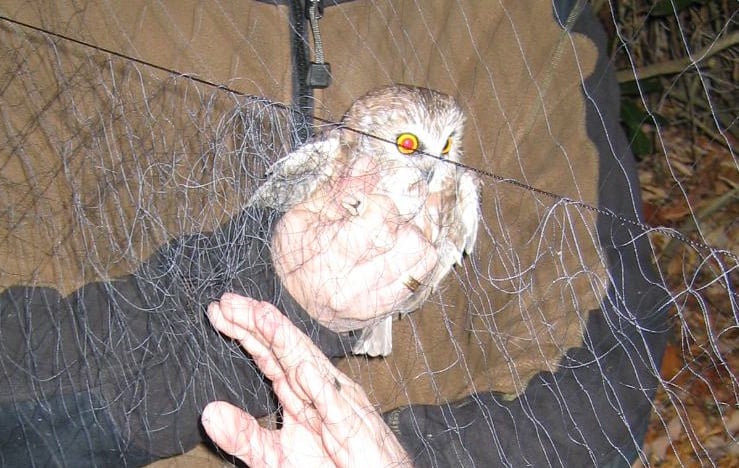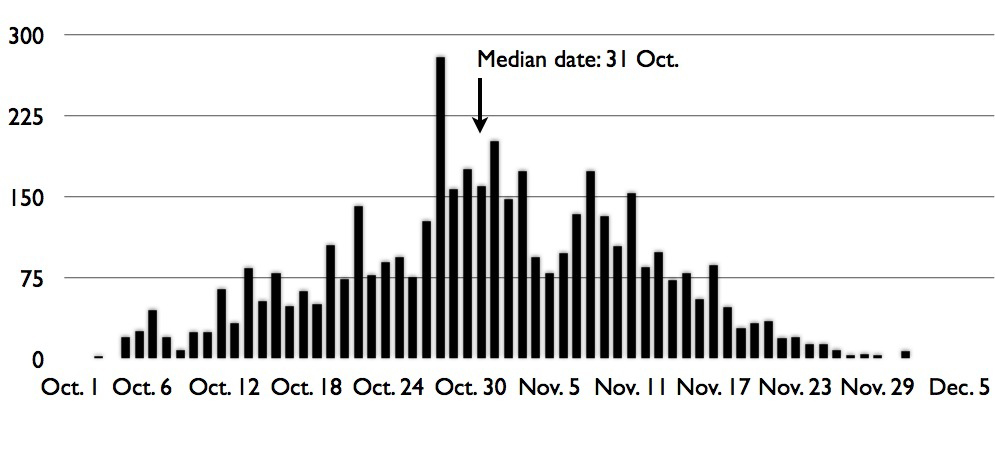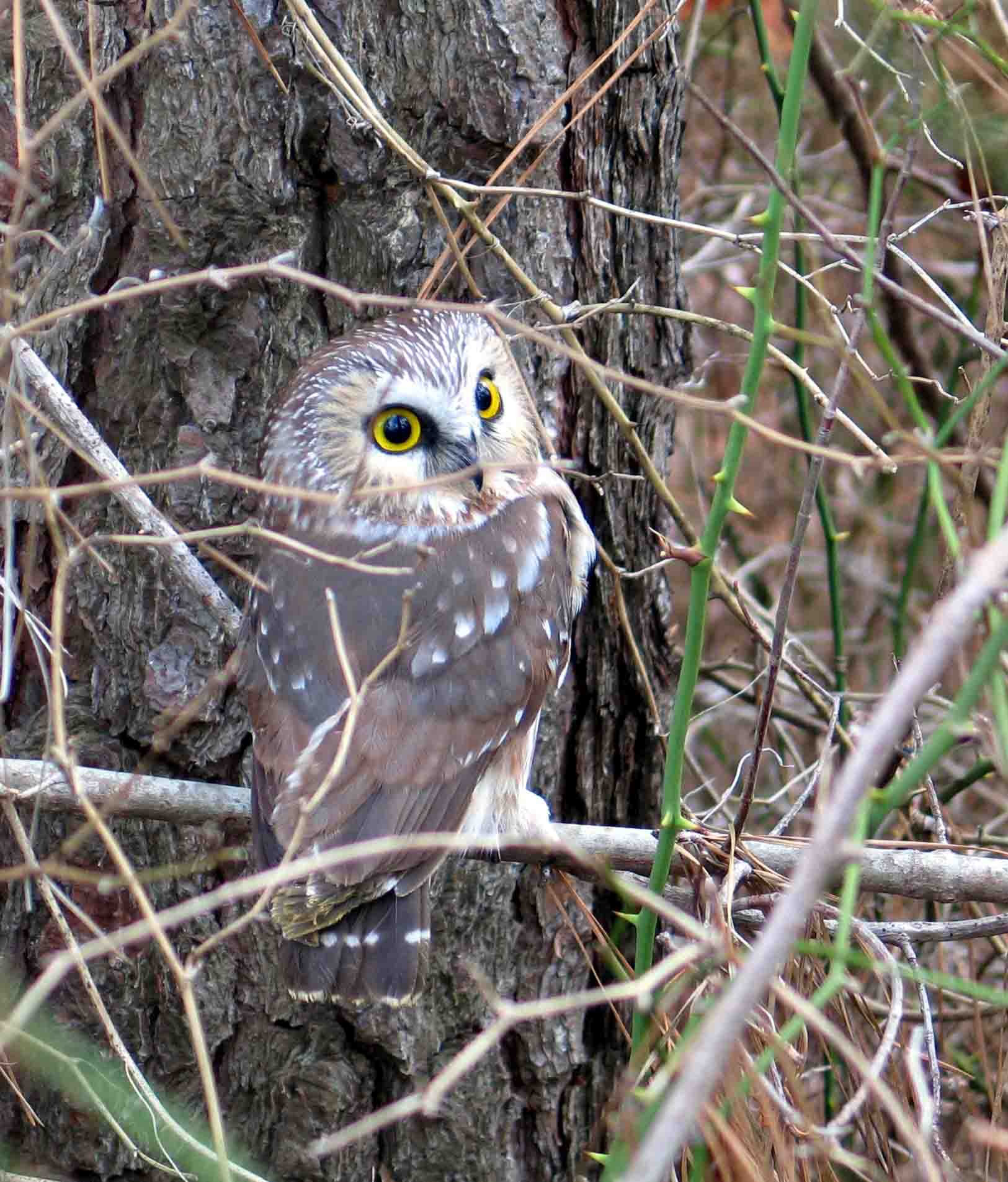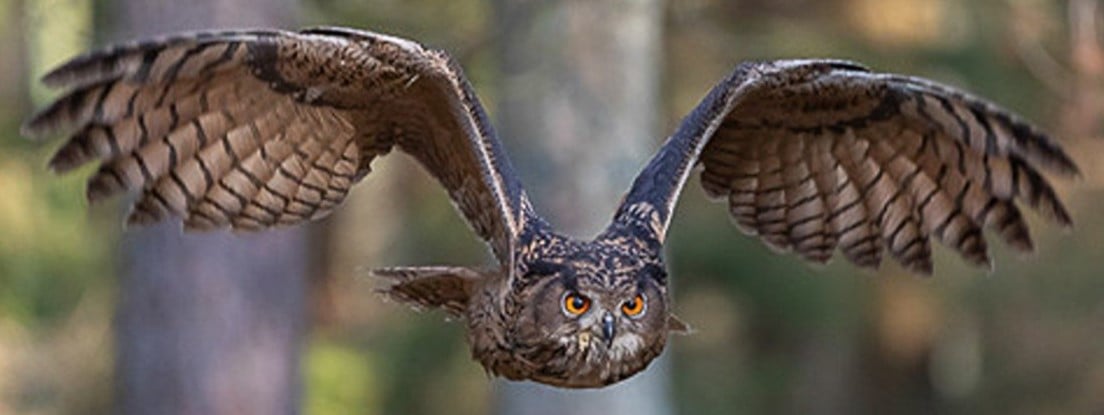Project Owlnet is an owl banding project to determine the timing, intensity, and pace of migration of the Saw Whet Owl. Before the start of the project in the 1990s, little was known about the owl's habits. Not much is known about many species of owl around the world, as they are not the easiest animal to follow around and observe. Even a relatively common owl like the SWO still holds many mysteries.
Project Owlnet catches the owls during their migration, allowing data to be collected so we can learn more about them.
Audio lures are used to lead the migrating owls into net arrays. The nets are designed for catching birds, so they are less likely to injure the birds than other things they get tangled in, plus they are checked hourly so birds aren't left to struggle for extended periods.
After they are collected, they get measurements taken, an assessment of their health, and they are banded for tracking purposes. They have found, for example, younger owls migrate earlier than older periods. More female owls are found than males. Migration rate increases after a cold front. Moonless nights have more migration.
Much data is also taken about the net arrays themselves. Size , shape, orientation, birds caught per area of net, and more. A good write-up of the methods can be found here.
 SWO being removed from capture net
SWO being removed from capture net
I found out about this just goofing around. I was searching Google for "owl events near me" and it came up with a surprising number of results. We're in the midst of owl migration now, so many groups are having public events to help with the banding of the owls. I found 3 near me over the next couple of weeks. I encourage you to see what's going on near you too. It's probably your best chance to actually hold an owl for free.
 Average number of owls caught per night
Average number of owls caught per night
On a personal note, I'm done my work from home job this week and starting my new in office job on Wednesday, so I'm not sure what my posting is going to look like for a bit. I'm not sure when I'll get to post or how much, but I'll do what I can.


Flickr